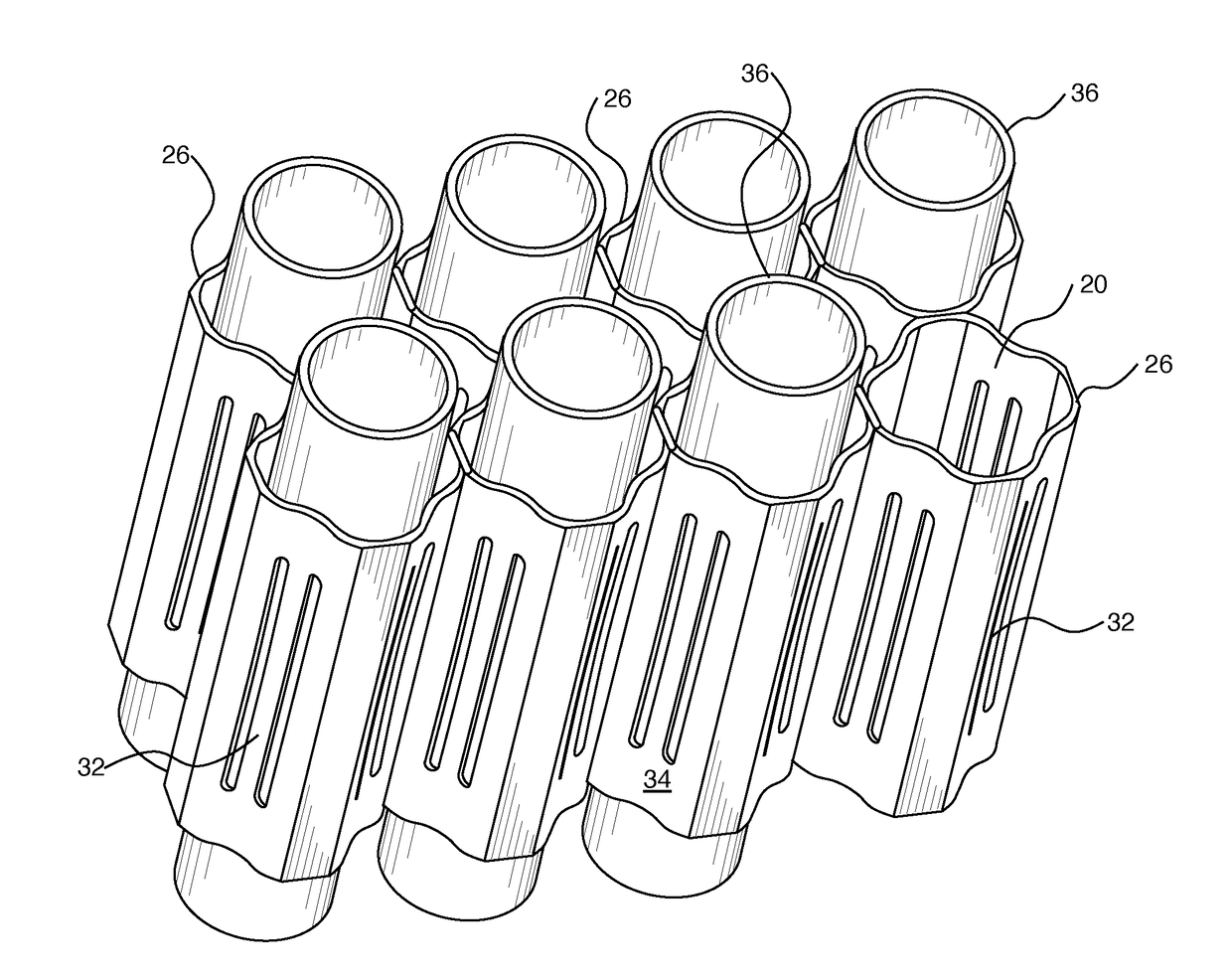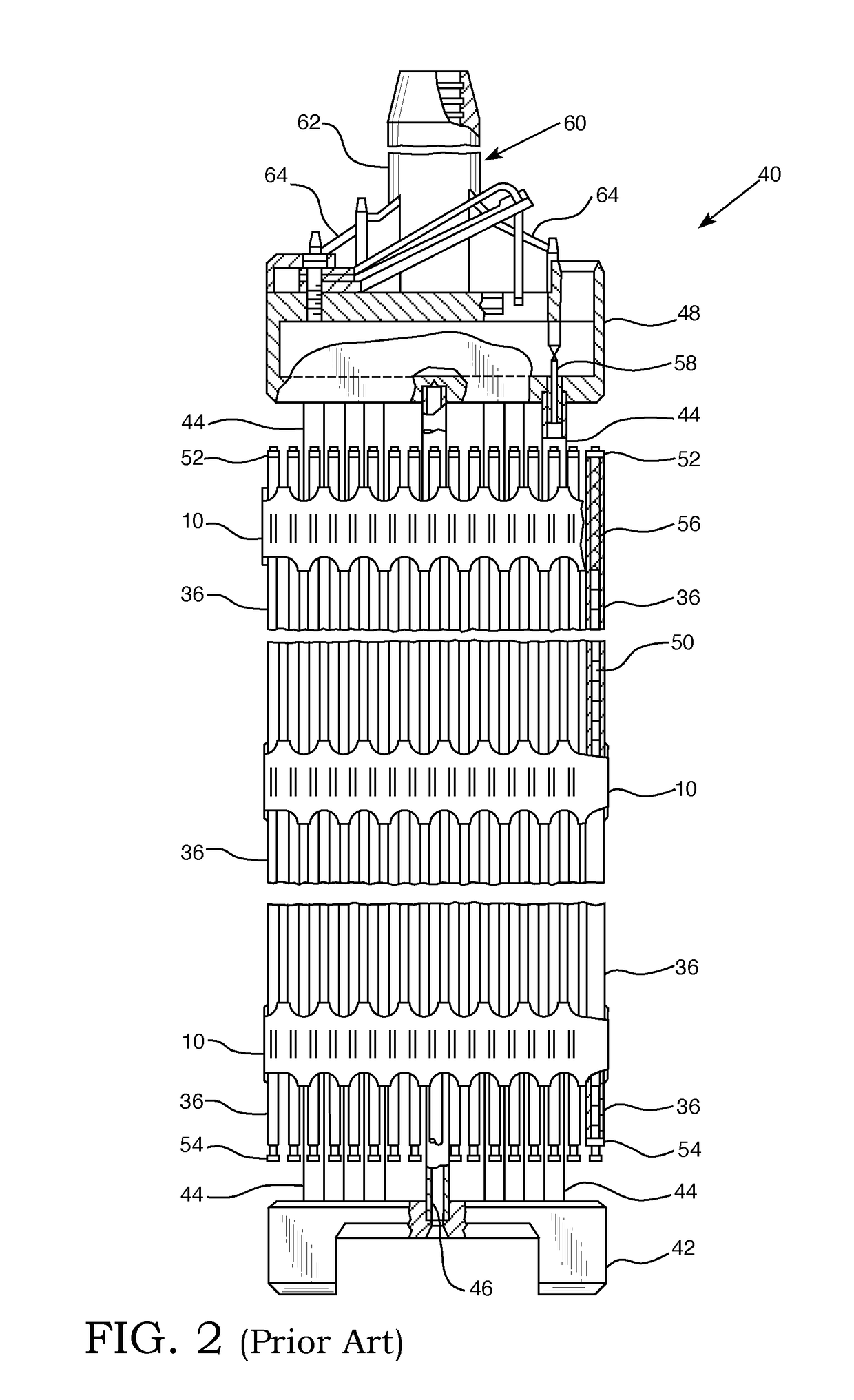Spacer Grid Using Tubular Cells With Mixing Vanes
a tubular cell and grid technology, applied in nuclear engineering, nuclear elements, greenhouse gas reduction, etc., can solve the problems of current grid design, limited power within the core, and limited power outpu
- Summary
- Abstract
- Description
- Claims
- Application Information
AI Technical Summary
Benefits of technology
Problems solved by technology
Method used
Image
Examples
Embodiment Construction
[0020]Many conventional spacer grids are composed of straight grid straps that are interleaved together to form an egg-crate configuration having a plurality of roughly square cells, many of which support fuel rods. An example of such a conventional fuel grid 10 can be found in FIG. 1. A spaced, parallel array of grid straps 12 of equal length are positioned orthogonally to a second plurality of the spaced, parallel grid straps 14 of equal length and are encircled by a border strap 18, with each of the straps being welded at their intersections. The cells 16 support the fuel rods while the cells 20 support guide tubes and an instrumentation tube. Because the fuel rods must maintain a spacing or pitch between each other, these straight grid straps 12 and 14 at the locations that border the cells 16 that support the fuel rods have springs 22 and / or dimples 24 that are stamped in the sides of the straps 12 and 14 to protrude into the cells 16 to contact the fuel rods and hold them firm...
PUM
 Login to View More
Login to View More Abstract
Description
Claims
Application Information
 Login to View More
Login to View More - R&D
- Intellectual Property
- Life Sciences
- Materials
- Tech Scout
- Unparalleled Data Quality
- Higher Quality Content
- 60% Fewer Hallucinations
Browse by: Latest US Patents, China's latest patents, Technical Efficacy Thesaurus, Application Domain, Technology Topic, Popular Technical Reports.
© 2025 PatSnap. All rights reserved.Legal|Privacy policy|Modern Slavery Act Transparency Statement|Sitemap|About US| Contact US: help@patsnap.com



